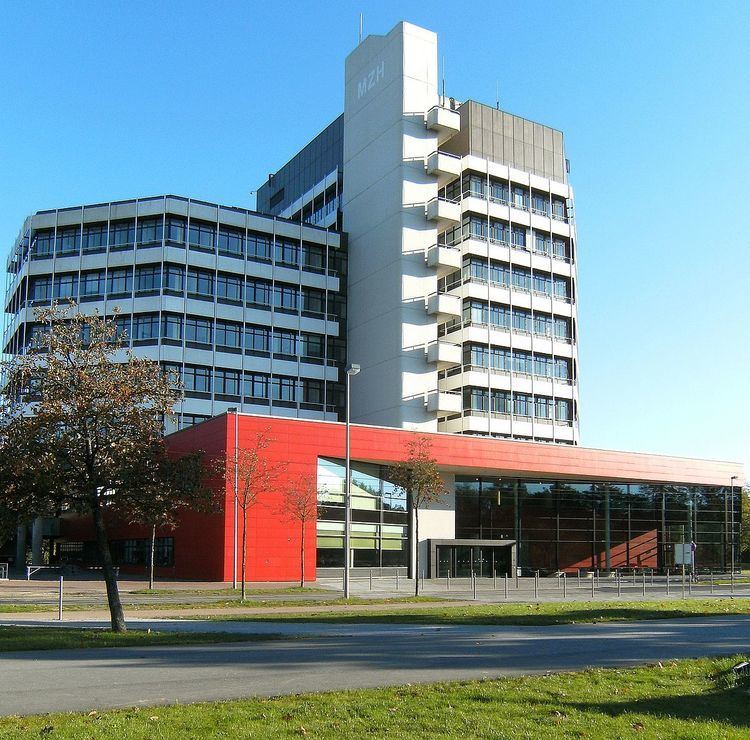Students 20,000 Total enrollment 19,621 (2015) Founded 1971 | Established 1971 Website www.uni-bremen.de Phone +49 421 2181 Rector Bernd Scholz-Reiter | |
 | ||
Academic staff 2,300; 330 Professors (without assistant professors) Notable alumni Reyhan Şahin, Farid Khavari, Helga Trüpel, Ana Castillo, Ingo Heidbrink Similar Jacobs University Bremen, University of Oldenburg, Bremen University of Applie, University of Hamburg, Leibniz University of Hanover Profiles | ||
A student perspective studying at the university of bremen
The University of Bremen (German Universität Bremen) is a university of approximately 23,500 people from 115 countries that are studying, teaching, researching, and working in Bremen. It has become the science center of North West Germany. It is one of 11 institutions which were successful in the category "Institutional Strategies" of the Excellence Initiative launched by the Federal Government and the Federal States. The university was also successful in the categories "Graduate Schools" and "Clusters of Excellence" of the initiative.
Contents
- A student perspective studying at the university of bremen
- University of bremen
- Faculties
- History
- References
The university has a most notable reputation in political science, industrial engineering, digital media, physics, mathematics, microbiology, geosciences (particularly marine geosciences), and European law.
Its commitment was rewarded with the title “Stadt der Wissenschaft 2005” (City of Science of 2005), which science, politics, business and culture won jointly for Bremen and Bremerhaven, by the Foundation for German Science (Stifterverband für die Deutsche Wissenschaft).
Some of the paths that were taken in the early days of the University, also referred to as the "Bremen model", have since become characteristics of modern universities, such as interdisciplinary, explorative learning, social relevance to practice-oriented project studies which enjoy a high reputation in the academic world as well as in business and industry. Other reform approaches of the former ‘new university’ have proven to be errors such as waiving a mid-level faculty, tripartite representation or too “student-friendly” examination regulations and were given up in Bremen a few years ago.
University of bremen
Faculties
These are the twelve faculties into which the university is divided:
History
Though Bremen became a university city only recently, higher education in Bremen has a long tradition. The Bremen Latin School was upgraded to "Gymnasium Academicum" in 1584. 1610 it was transformed into "Gymnasium Illustre". Under Napoleonic rule in 1811 the institution of a "French-Bremen University" was considered. In 1971 the University of Bremen opened its doors.
The development of the University of Bremen can be divided up into steps of 10 to 12 years – first foundation, then restructuring, consolidation and profile building. At the beginning of the 1970s, the University was set up as a “science complex”in , a city oriented towards trade and seafaring that had no experience with academia, particularly not with leftist professors. University, business and the public in the region did not move closer together until the 1980s, through the foundation of the natural science and engineering departments, co-operation with the newly founded Alfred Wegener Institute for Polar and Marine Research in Bremerhaven (1980), as well as the development of the co-located technology park (from 1988). Other important factors were the initial success in setting up collaborative research centres and in the acquisition of considerable of external funds. The mathematics professor Jürgen Timm, elected university rector in 1982, was largely responsible for this turnaround.
As a consequence, the University of Bremen improved in research rankings, gained national recognition, and established a number of endowment professorships. Research excellence and its interdisciplinary profile is reflected in the establishment of numerous research centers and programs funded by the German Research Foundation (DFG). These currently include eight collaborative research centers and the Research Center of Ocean Margins, one of only six national research centers of the DFG.
From 1996 until 2001 the University of Bremen (along with six other universities in Germany) participated in a pilot scheme for structural reform of university administration, funded by the Volkswagen Foundation. This project improved the co-operation and communication between the university's administration, teaching and research units. With the realization of the "Laptop University" project, the University of Bremen became a leading university in the field of digital media education in Germany.
By 2000, after an organisational development process of three years in which the university set goals for the development of its profile, this trend was continued with the promotion of junior scientists in structured graduate programs, and staff development programs for the great number of early-stage researchers entering the university as junior professors. In teaching, there are comprehensive evaluations, more specific admission requirements, and improved completion rates for Bachelors and master's degrees.
